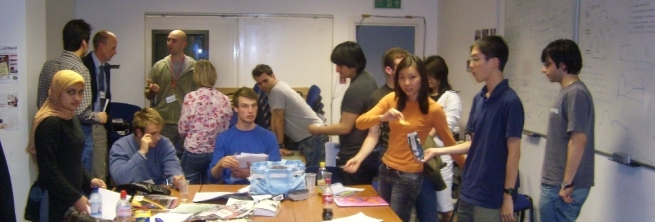Imperial
From 2007.igem.org
| Line 109: | Line 109: | ||
<span class="newsmeta-date">04 oct 07</span> | <span class="newsmeta-date">04 oct 07</span> | ||
</div> | </div> | ||
| - | <p>Welcome to the new Imperial College iGEM 2007 wiki! At the moment, most of the links on this page point to nowhere, or to external pages. We are in the process of moving content to this new site, so please bear with us as we get it done. Soon you will be able to read all about our iGEM project and experience!</p> | + | <p>Welcome to the new Imperial College iGEM 2007 wiki! At the moment, most of the links on this page point to nowhere, or to external pages. We are in the process of moving content to this new site, so please bear with us as we get it done. Soon you will be able to read all about our iGEM project and experience! For now, have a look at our <a href="http://openwetware.org/wiki/IGEM:IMPERIAL/2007">OpenWetware site</a></p> |
</div> | </div> | ||
Revision as of 23:47, 3 October 2007


The Imperial College iGEM 2007 team consists of ten 2nd year undergraduates from Bioengineering and Bioscience. This year our contribution to the synthetic biology community will be the investigation of Cell-Free Systems, the common platform on which Cell By Date and Infector Detector will be built. The cell-free approach is particularly useful for Synthetic Biology to operate in the medical and food industries. We believe that the characterization of this cell-free chassis will unlock fresh potential in simple constructs. Our project strategy is based on the Engineering Cycle. We are at the final testing and polishing stages of our project, and we will soon be finished!
This site is currently under construction. For more information, have a look at our OpenWetware site.
Infector DetectorInfector Detector is a system that will detect the presence of biofilm infections on urinary catheters by reporting on the presence of AHL, a signalling molecule used by E.''coli''. The system is able to detect very small concentrations of AHL, and outputs a fluorescent protein as a result. |
Cell by DateCell by Date will tell you when meat has been out of the fridge for too long. It produces fluorescent protein when it is found in an ambient temperature above a threshold of 10°C. The fluorescent protein accumulates over time, and eventually becomes visible to the naked eye once the system has been exposed to high temperatures for long enough. |
